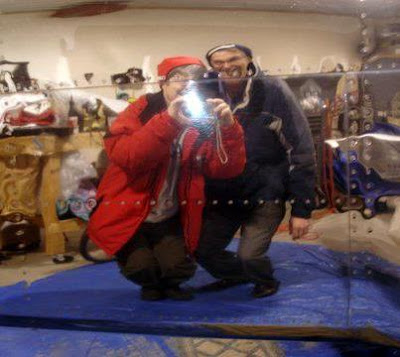Hi All,
We just received our RV-10 emp/cone kit this week. We inventoried yesterday and we are setting up the shop to get started. The wife (Dana) is getting nervous. This will be our first build and we are going to be looking any helpful information you folks are willing to offer up.
I have a question that I could not find looking around the site, how do you strip the protective coating on just the rivet lines? Is there an easy way?
Thanks all,
Adam
We just received our RV-10 emp/cone kit this week. We inventoried yesterday and we are setting up the shop to get started. The wife (Dana) is getting nervous. This will be our first build and we are going to be looking any helpful information you folks are willing to offer up.
I have a question that I could not find looking around the site, how do you strip the protective coating on just the rivet lines? Is there an easy way?
Thanks all,
Adam





